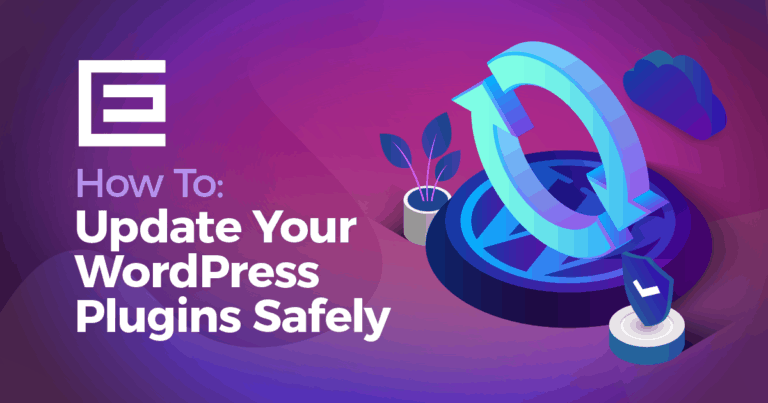We have all experienced this at least once. You have been searching endlessly online for a particular product and just when you think you have found what you are looking for, you click on the link and immediately get taken to a dead end. This is commonly called a 404 error or also called a broken link.
What Is a Broken Link?
Broken links are more than just minor nuisances; they are the result of various factors that can significantly disrupt the user experience and degrade a website’s performance. The causes of broken links are manifold. They may arise from the deletion or relocation of a web page without proper redirection, changes in the site’s architecture, or simply due to typing errors in the URL.
Additionally, expired domains, outdated content, and mishandled updates can all contribute to the creation of these digital dead-ends. Even external websites that your site links to can be a source of broken links if they change their URL structure or shut down without notice.
The impact of broken links on website performance is multifaceted. For users, encountering a broken link can lead to frustration and a loss of trust in the website, which often results in a quick exit and a potential loss of a customer or reader. For website owners, this translates into increased bounce rates and lost opportunities for engagement or conversion.
From an SEO perspective, broken links can impede search engine crawlers, which may lead to a decrease in page ranking and visibility. Search engines prioritize the user experience, and frequent errors such as broken links signal a poor quality site, which search engines are likely to rank lower.
Detecting broken links is, therefore, an essential task for website maintenance, and there are various tools and methods available for this purpose. Manual checking involves going through each link to ensure it directs to the correct page, which is time-consuming and impractical for larger sites. Automated tools, on the other hand, can scan entire websites quickly, identifying broken links with minimal effort from the site administrator.
Several recommended tools for detecting broken links include Ahrefs, Dead Link Checker, and Screaming Frog. Ahrefs offers a comprehensive suite of SEO tools, including a broken link checker that can schedule regular crawls and compare differences over time. Dead Link Checker is a user-friendly tool that allows for single or multiple site checks, providing a straightforward solution for identifying dead links. Screaming Frog is a program that runs locally on your computer and can check a website for broken links and other server errors, ensuring that your website remains clean and functional. Utilizing these tools can help maintain the health of a website and ensure a positive user experience, keeping both visitors and search engines in good favor.
Finding Broken Links
Identifying broken links is a crucial task for maintaining a healthy website. Here’s a focused approach on how to find these elusive broken links:
Tools for Detecting Broken Links
- Website Audit Tools: Utilize comprehensive tools like Screaming Frog SEO Spider, Ahrefs, or SEMrush. These tools crawl your entire website, similar to how search engine bots do, and report back with a list of broken links.
- Google Search Console: A free tool provided by Google, it can highlight broken links that Google’s crawlers have encountered on your site. It’s particularly useful for identifying broken inbound links.
- Browser Extensions: There are various browser extensions available that can quickly check the page you’re currently viewing for broken links. These are handy for spot checks but less efficient for large-scale audits.
Conducting a Broken Link Audit
- Regular Audits: Incorporate broken link checks into your regular SEO routine. The frequency of these audits can depend on the size and dynamism of your website.
- Comprehensive Crawling: Ensure that the tool you use is set to crawl your entire website. Some tools have limits on the number of pages they will crawl unless configured otherwise.
- Analyzing External Links: While most tools focus on internal links, it’s also important to check external links periodically. These are more likely to become broken over time as you have no control over the external sites.
- Prioritizing High-Value Pages: Pay special attention to broken links on high-traffic pages or those that are crucial to your website’s user experience or sales funnel.
By utilizing the right tools and conducting regular, thorough audits, you can identify and address these issues, ensuring a smooth and efficient user experience on your website. Remember, the key is in the consistent and thorough examination of your site’s links.
Fixing Broken Links
Repairing broken links is a critical task for business and website owners, as it helps maintain site integrity and search engine trust. Here’s a step-by-step guide to fixing broken links effectively:
Step-by-Step Guide to Fixing Broken Links
Deciding Whether to Fix, Redirect, or Remove:
- Assess the Link’s Value: Determine the importance of the linked content. If it’s a high-value link (e.g., to a popular post or a partner website), you’ll likely want to fix it.
- Fix the URL: If the link is broken due to a simple typo or a small change in the destination URL, correct it directly.
- Redirect the Link: If the content has moved, set up a 301 redirect from the old URL to the new one. This preserves the link juice and redirects users and search engines to the new location.
- Remove the Link: If the linked content no longer exists and there’s no relevant page to redirect to, remove the link altogether to clean up your site.
How to Fix Broken Links Without Harming SEO
To fix broken links without negatively impacting your SEO, always use 301 redirects for pages that have moved permanently. This tells search engines that the page has a new location and that the value of the original link should be transferred to the new URL. Avoid using 302 (temporary) redirects unless the change is indeed temporary, as these do not pass on link equity.
Adding a 301 Redirect to htaccess
The syntax for creating the 301 redirect will look like the below:
Redirect 301 /landing-page-2 https://www.yourdomain.com/landing-page-1
- /landing-page-2 is everything behind the forward-slash after your domain name
- The second half is the FULL URL of the new page which the link would be directed to.
Updating The 301 Redirects via HTAccess
Editing the htaccess File can be simple but may also be very dangerous if you are not familiar with the process. We do want to give the warning that one missing character could crash your entire website. It is highly recommended that you copy the entire file and paste it into notepad so that you have a backup in case you break your website.
- Login into your direct admin access page.
- Go to File Manager
- Open the public_html folder
- In the account settings, make sure that show hidden files are checked.
- Click on the edit button to edit the HT Access file.
- Insert in the 301 redirect
- Press save
- Click on the old broken link and ensure that it is going to the new destination.
By following these steps and best practices, you can ensure that broken links are fixed promptly and with minimal disruption to your site’s SEO performance. Keeping a vigilant eye on your site’s link health is a continuous process that pays dividends in maintaining a robust online presence.
Preventing Broken Links
Preventing broken links is an essential strategy for ensuring a website remains user-friendly and ranks well in search engine results. By proactively managing and reducing the occurrence of broken links, website owners can safeguard their site’s reputation and provide a seamless user experience. Here are some strategies to help prevent broken links:
Strategies for Preventing Broken Links
Use Persistent URLs: When designing your website’s URL structure, aim for permanence. Avoid changing URLs unless absolutely necessary. If you must change a page’s URL, ensure that a redirect is in place immediately.
Avoid Deleting Content: Instead of deleting pages, consider updating them with new content. This preserves the integrity of any inbound links and maintains the authority that the page has built over time.
Check Links After Site Updates: After updating content or altering your site’s structure, manually check links on the updated pages to ensure they still work as intended.
Validate External Links Regularly: Since you can’t control external content, set up a routine to check the validity of external links. This can be part of your regular site audit and can help catch links that may have become broken due to changes on other sites.
Implementing Safe Redirection: When you must redirect pages, use HTTP status codes correctly. A 301 redirect indicates a permanent move, while a 302 indicates a temporary one. Use these judiciously to inform search engines and users of the status of your content.
Regular Audits and Maintenance Schedules
Schedule Regular Link Audits: Use automated tools to conduct regular link audits. Depending on the size and dynamism of your website, these can be weekly, monthly, or quarterly. Regular audits help identify and fix broken links before they impact your users and SEO.
Keep a Maintenance Checklist: Maintain a checklist for website health that includes checking for broken links, outdated content, and other common site issues. This checklist can be a part of a broader website maintenance routine.
Monitor for Unlinked Content: Sometimes content isn’t deleted but becomes unlinked, which can also negatively affect your site. Ensure that all your pages are properly linked within your site’s navigation structure.
Creating a 404 Error Page that Retains Visitors
Design User-Friendly 404 Pages: A custom 404 page should be more than an error message. It should guide visitors back to useful content, offer a way to report the broken link, and reflect your brand’s personality.
Provide Options on Your 404 Page: Include a search bar, a list of popular posts, or a sitemap on your 404 page. This gives visitors an immediate alternative to simply leaving your site.
Track 404 Hits: Use tools like Google Analytics to track the occurrence of 404 errors. This data can help you understand where users are frequently encountering broken links and prioritize fixes.
Educate and Engage: Use the 404 page to educate visitors about why they might have landed there and provide options to continue their journey on your site. Engaging users with humor or creative design can turn a potentially negative experience into a positive one.
By implementing these preventative measures, you can minimize the frequency and impact of broken links on your website. Regular maintenance, combined with a strategic approach to content management and a well-crafted 404 page, can significantly enhance the user experience and maintain the integrity of your site’s link structure.
Broken Links From External Sources
Sometimes you may receive a broken link error due to an external source improperly linking back to you with an incorrect URL. To correct this, it is recommended that you reach out to the author or webmaster and request an update to the incorrect URL.
Advanced Tips and Tricks
Beyond the basics of finding and fixing broken links, there are advanced strategies that can help webmasters turn potential negatives into SEO positives. Here are some advanced tips and tricks for managing broken links:
Using Google Chrome’s Inspect Tool for Link Checking
Google Chrome’s Inspect tool is a powerful feature for developers and webmasters that can also be used to check for broken links. By right-clicking on a web page and selecting “Inspect,” you can access a suite of developer tools that include the ability to monitor network activity. Here’s how to use it for link checking:
- Open the Inspect Tool: Right-click on the page and select “Inspect,” then click on the “Network” tab.
- Monitor Link Status: With the Network tab open, click through your site. The tool will list all the network requests made by the page, including those for linked documents.
- Identify Broken Links: Look for any file requests that return a 404 error. These are your broken links.
- Analyze and Act: Once you’ve identified a broken link, you can investigate further to see why it’s broken and take the appropriate action to fix it.
Handling Broken Backlinks for Improved Link Equity
Broken backlinks—links from other sites to your content that no longer work—can be a hidden goldmine for SEO. They represent lost opportunities for traffic and link equity. Recovering them can boost your site’s authority and search rankings. Here’s how to handle broken backlinks:
- Identify Broken Backlinks: Use a tool like Ahrefs or Majestic to find backlinks to your site that are returning a 404 error.
- Reach Out to Webmasters: Contact the owners of the sites linking to the broken URL and provide them with the updated link or a new resource that replaces the lost content.
- Redirect to Relevant Content: If you have content that is similar to what was originally linked, create a 301 redirect from the broken URL to the new content, preserving the link juice.
Leveraging Broken Links for Link Building Opportunities
Broken links on other websites can be a strategic opportunity for link building. If you find a broken link on a site that is relevant to your niche, you can create content that fits the link and reach out to the site owner to suggest replacing the broken link with a link to your newly created resource. Here’s how to leverage these opportunities:
- Find Broken Links on Other Sites: Look for industry blogs, resource pages, and informational sites in your niche that may have broken links.
- Create Relevant Content: Develop content that is a suitable replacement for the broken link’s intended destination.
- Propose a Link Swap: Contact the site owner, inform them of the broken link, and suggest your content as an alternative.
By using these advanced techniques, you can not only improve your site’s SEO but also contribute to a better web ecosystem by helping others maintain the quality of their own sites. These proactive approaches to managing broken links can foster good relationships with other site owners and potentially lead to more traffic and higher search engine rankings for your site.
Summary
Managing broken links is not just a minor detail in website maintenance; it is a fundamental aspect that impacts search engine optimization, user experience, and the overall health of a website. Broken links act as barriers to the efficient navigation of a website, frustrating users and obstructing search engine crawlers.
They can erode a website’s credibility and lower its ranking in search engine results, making it harder for potential visitors to find the site. By ensuring that all links lead to the correct destinations, website owners can provide a smooth and enjoyable experience for their users, which can lead to increased engagement, lower bounce rates, and higher conversion rates.
Regular website audits are essential in maintaining a clean, user-friendly site free of broken links. Such audits should be conducted periodically to identify and resolve issues before they become problematic. By incorporating link checks into routine site reviews, webmasters can catch and fix broken links, keeping their website current and accessible. This proactive approach to website management is a critical step in sustaining a strong online presence and achieving long-term success in the digital space.
The diligent management of broken links is a task that website owners shouldn’t overlook. It is a continuous process that requires attention and action. By committing to regular audits and prompt repairs, webmasters can ensure that their site remains a reliable resource for visitors and maintains its standing in the competitive landscape of search engine rankings.
Tags: Digital Marketing • Search Engine Optimization • WordPress







